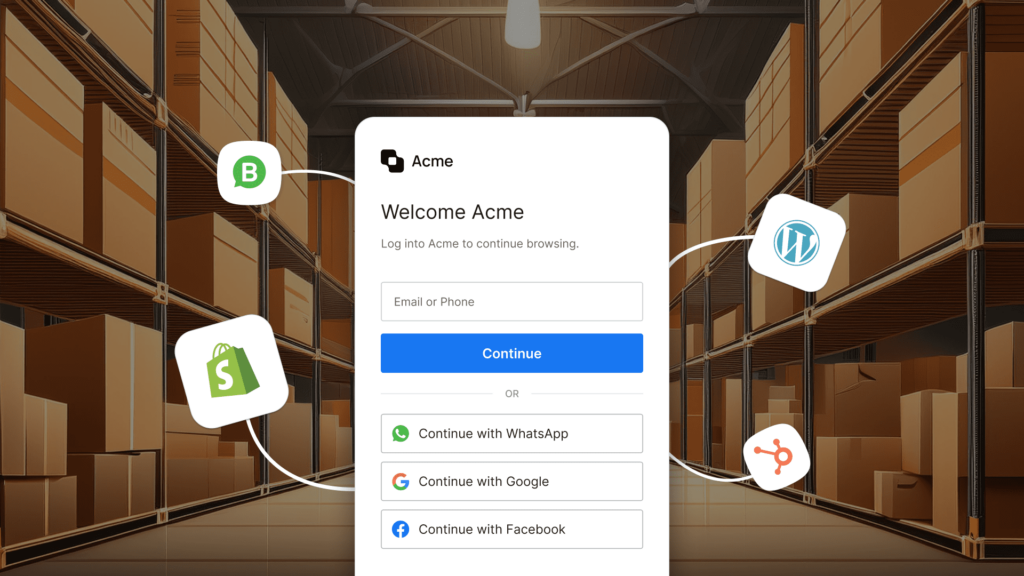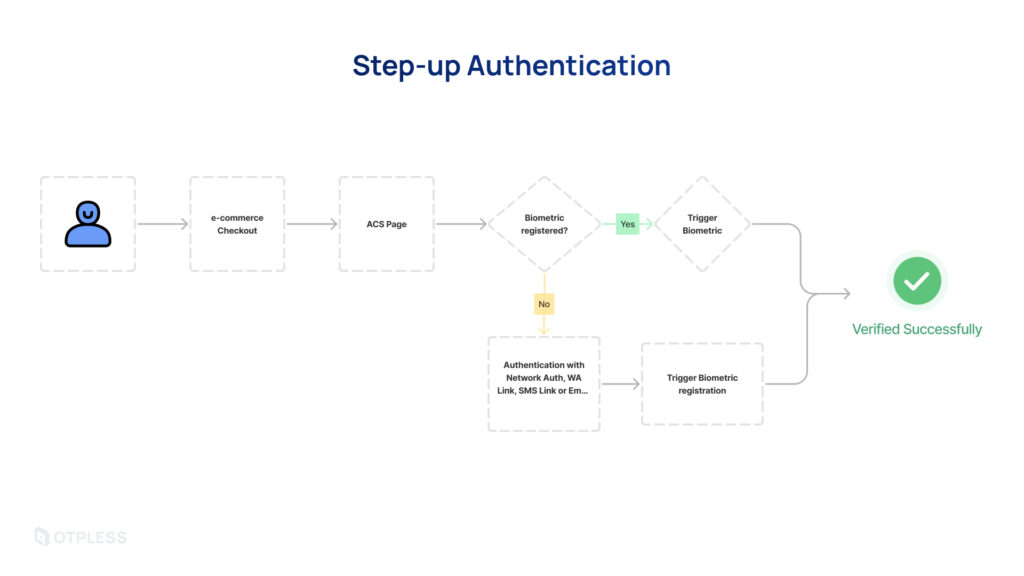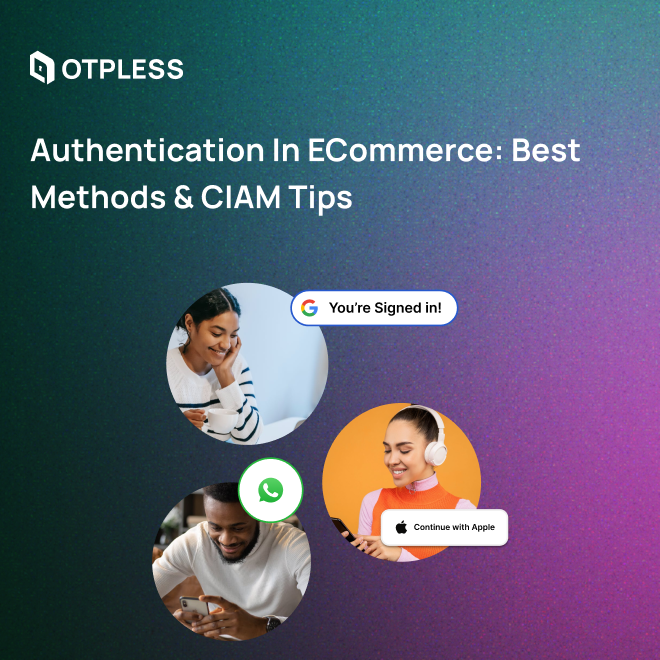In today’s digital age, the eCommerce landscape is rapidly expanding, bringing with it both opportunities and challenges. One of the most critical challenges eCommerce businesses face is ensuring secure and efficient user authentication. With cyber threats on the rise, implementing robust authentication methods and Customer Identity and Access Management (CIAM) strategies is essential for protecting customer data and enhancing user experience. This blog explores the best authentication methods and provides practical CIAM tips to help eCommerce businesses stay ahead of the curve.
Understanding Authentication in eCommerce
Authentication is the process of verifying the identity of a user before granting access to an eCommerce platform. In the context of eCommerce, authentication ensures that the person attempting to make a purchase or access account information is indeed who they claim to be. Effective authentication methods are crucial for preventing unauthorized access, protecting sensitive customer information, and maintaining the integrity of online transactions.
The Importance of Strong Authentication in eCommerce
Strong authentication measures are vital for eCommerce businesses for several reasons:
- Protecting Customer Data: With the increasing amount of personal and financial data shared online, robust authentication helps safeguard customer information from cybercriminals.
- Preventing Fraud: Effective authentication methods reduce the risk of fraudulent activities, such as account takeovers and unauthorized transactions.
- Building Customer Trust: Customers are more likely to shop with businesses that prioritize their security, leading to increased loyalty and repeat purchases.
- Compliance with Regulations: Implementing strong authentication practices helps businesses comply with data protection regulations, such as GDPR and CCPA.
Best Authentication Methods for eCommerce
1. Multi-Factor Authentication (MFA)
Multi-Factor Authentication adds an extra layer of security by requiring users to provide two or more verification factors. Typically, this includes something they know (password), something they have (smartphone), and something they are (biometric verification). MFA significantly reduces the risk of unauthorized access and enhances overall security.
2. Social Login
Social login allows users to sign in using their existing social media accounts (e.g., Facebook, Google, Twitter). This method simplifies the login process, reduces password fatigue, and increases user engagement by offering a quick and familiar authentication experience.
3. Email and SMS OTPs
One-Time Passwords (OTPs) sent via email or SMS are commonly used for transaction verification and two-factor authentication. While effective, it’s essential to ensure secure delivery channels to prevent interception by malicious actors.
4. Biometric Authentication
Biometric methods, such as fingerprint scanning, facial recognition, and voice recognition, offer high security and convenience. These methods are becoming increasingly popular due to their ease of use and the growing availability of biometric-enabled devices.
5. Passwordless Authentication
Passwordless authentication methods, such as OTPless, eliminate the need for traditional passwords altogether. Users can authenticate using email links, SMS codes, or mobile apps, reducing the risk of password-related security breaches and enhancing user experience.

CIAM Tips for eCommerce Businesses
1. Implement Strong Security Measures
Protect customer data by implementing robust security measures, such as encryption, secure password policies, and regular security audits. Ensure that your authentication methods are up-to-date and capable of defending against evolving cyber threats.
2. Offer a Seamless User Experience
Balance security with convenience by offering user-friendly authentication methods. Simplify the registration and login processes to reduce friction and enhance user satisfaction.
3. Ensure Scalability and Flexibility
Choose authentication solutions that can scale with your business growth and adapt to changing user needs. Flexible authentication methods, such as multi-channel verification and passwordless options, cater to diverse user preferences.
4. Leverage Data Analytics
Use data analytics to monitor authentication processes and identify potential security threats. Analyze user behavior to detect anomalies and take proactive measures to prevent fraud.
5. Educate Your Customers
Educate your customers about the importance of secure authentication and encourage them to adopt strong security practices. Provide clear instructions on using different authentication methods and highlight the benefits of enhanced security.
Additional Implementation Considerations
Ultimately, the goal is to implement a secure, scalable, and user-friendly authentication system that aligns with your business objectives, regulatory requirements, and the evolving landscape of cybersecurity threats and consumer expectations. You need a CIAM platform that grows alongside your business and adapts to new challenges.
When choosing authentication methods, consider their integration with your existing tech stack and ensure they are compatible and scalable to support business growth and maintain performance during peak periods.
Here are some other aspects to consider for frictionless and secure customer identity management:
Step-Up Authentication
This approach requests an additional authentication factor from the user before performing a sensitive action (e.g., checking out high-value items in the shopping cart). Step-up authentication can greatly reduce the impact of account takeover and provide a visible sense of security to end users at the right time in their journey.

Progressive Profiling
Long registration forms and extensive upfront data collection can harm your site’s adoption and conversion rates. eCommerce stores should consider progressive profiling – an approach that “gets users in” quickly with minimal information and collects more data during future visits when users are more willing to part with those details.
Guest Account Creation
Many online retailers support guest account creation but often without any form of authentication. Instead, consider offering simple authentication like magic links for guest checkouts. This validates the identity of the user, provides a paper trail of the transaction, and enables the business to link the guest account to a full account if one is created later.
A/B Testing
The success and continued growth of eCommerce companies depend on rapid adaptation and experimentation based on user needs. Businesses should ensure their CIAM implementation is adaptable as well – if changing the login screen or trying a new authentication method takes months of work, the customer journey will suffer.
How OTPLESS Enhances eCommerce Authentication
OTPLESS is a modern authentication platform designed to provide secure, seamless, and user-friendly verification solutions for eCommerce businesses. By offering multi-channel verification, advanced fraud detection, and passwordless authentication methods, OTPLESS helps eCommerce businesses reduce user friction, enhance security, and lower operational costs.
Key Features of OTPLESS
- Multi-Channel Verification: Supports verification through Network Authentication, SMS, WhatsApp, Email, and Social Sign-in methods, providing flexibility and boosting success rates.
- Advanced Fraud Detection: Utilizes multiple parameters to detect and prevent fraudulent activities, ensuring secure transactions.
- Passwordless Authentication: Eliminates the need for traditional passwords, offering a seamless and secure login experience.
- Client-Side SDK: Ensures seamless integration with minimal setup, allowing businesses to quickly adopt OTPLESS’s verification solutions.
Conclusion
Implementing effective authentication methods and CIAM strategies is vital for eCommerce businesses to protect customer data, enhance user experience, and drive conversions. By leveraging innovative solutions like OTPLESS, eCommerce businesses can stay ahead of cyber threats and provide a secure, user-friendly shopping experience.

